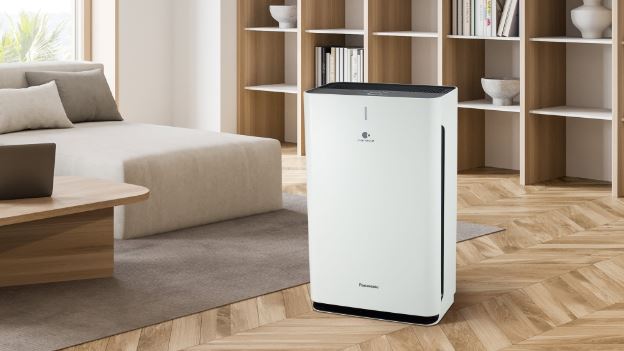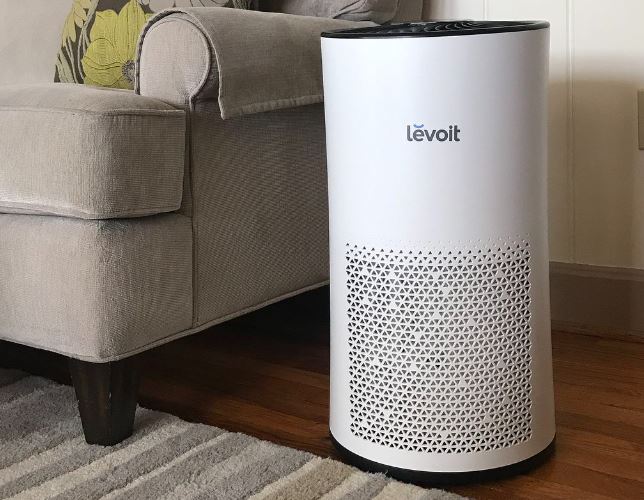Pamper Your Lungs: Give Them the Gift of Clean Air
Pamper Your Lungs: Give Them the Gift of Clean Air
Blog Article
In an era of heightened health awareness, the air we breathe in has become a prominent focus for homeowners and health-conscious individuals. With rising pollution levels and a better understanding of the effects of indoor pollutants on our health, it's no surprise that the air purifier market is booming.
Air purifiers are devices that eliminate airborne contaminants in a room, improving indoor air quality. They are especially advantageous for people with allergies, asthma, or other respiratory issues as they can significantly reduce the presence of allergens, pollutants, and irritants in the air. Even healthy individuals can rely on the added protection of air purifiers, as they provide reassurance and safeguard against airborne diseases.
This guide will delve into the world of air purifiers, discussing the perks they offer, the array of models available, crucial aspects to think about when choosing a purifier, and maximizing your air purifier's potential. By the end, you should have a comprehensive understanding of air purifiers and be able to decide confidently about whether investing in one is the right choice for your household.

Decoding Air Pollutants and Their Impact on Health
To understand why air purifiers are essential, it's key to comprehending the types of pollutants they target and the potential consequences of prolonged exposure.
Indoor air pollutants can be generally classified into three main types:
- Particulate Matter: This includes tiny solid and liquid particles floating in the atmosphere. Examples include dust, smoke, pollen, pet dander, mold spores, and more. Particulate matter can trigger respiratory problems and set off allergic responses.
- VOCs: A Concern for Indoor Air: VOCs are gases released by solids and liquids. Sources of VOCs include paints, cleaning products, aerosol sprays, and pesticides. Exposure to VOCs can lead to eye, nose, and throat irritation, headaches, and nausea.
- Understanding Biological Contaminants: These include bacteria, viruses, mold, and mildew. They can cause a variety of health problems, from minor allergies to serious infections.
The consequences of exposure on human health can vary significantly. For individuals with respiratory conditions or compromised immune systems, exposure to indoor air pollutants can lead to severe complications. Even for healthy people, prolonged exposure over time to certain pollutants can contribute to the development of respiratory issues and other health problems over time.

Unraveling Air Purification Technology
Air purifiers use a combination of physical and chemical processes to effectively eliminate contaminants. Understanding the underlying principles employed by purifiers will help you appreciate their effectiveness and the different types available on the market.
Here are the primary mechanisms and innovations used in air purifiers:
- Filtration Excellence: This is the predominant technique used in air purifiers. It involves using specialized filters to capture particles as air is drawn into the purifier. The filters can be made from various materials, each designed to capture specific types of particles. For example:
- Pre-filters: The First Line of Defense: These are usually the initial barrier, capturing larger particles like dust, hair, and similar larger particles.
- HEPA Filtration: Unparalleled Performance: HEPA filters are exceptionally efficient at trapping tiny particles, including pollen, dust mites, and some bacteria and viruses. To be labeled a true HEPA filter, it must trap a minimum of 99.97% of particles down to 0.3 microns in size.
- carbon filtration: These filters are designed to reduce VOCs and odors.
- The Power of Ionization: Ionizers use electrical charges to create ions with a negative charge, which latch onto airborne particles. The particles become charged, causing them to stick to surfaces or the purifier.
- Ozone: A Powerful Purifier: Some air purifiers use ozone as a potent disinfectant to destroy contaminants. While effective, excessive ozone exposure carries risks so these types of purifiers should be used with caution and only in unoccupied spaces.
- UV Light: A Radiant Solution: UV light can be used to destroy biological contaminants like bacteria, viruses, and mold spores. UV light is often used in combination with a filter to capture particles first, followed by UV light to neutralize any remaining biological threats.
Selecting the Perfect Purifier
With a variety of choices available, selecting the perfect purifier can be a difficult decision. It's important to consider a range of criteria to ensure you make the right choice for your particular needs and room size.
Here are some essential factors to weigh:
- Room Size: Air purifiers are typically rated according to room size, so it's important to choose a model that can adequately cater to the room size. Most purifiers will list a suggested room size or CADR rating, which indicates the volume of filtered air delivered per minute.
- Targeted Pollutants: Identify the types of pollutants you want to target. If you suffer from allergies, look for a purifier with a HEPA filter. For eliminating odors, consider a model with a carbon-based filter. If you're concerned about pathogenic microorganisms, a purifier with UV light disinfection might be best.
- Noise Level: Air purifiers can produce varying levels of noise, so if you plan to use it in a bedroom or quiet space, look for models with a low-noise or sleep mode.
- Maintenance and Costs: Consider the ongoing costs and maintenance requirements of the purifier. HEPA filters, for example, typically need to be replaced every 6-12 months, depending on use and environmental factors. Factor in the cost of replacement filters when making your choice.
- Smart Innovations: Many purifiers offer innovative smart capabilities like automatic modes, air quality monitoring, and wireless control, allowing wireless control and real-time data. These features can enhance the convenience and effectiveness of your purifier.
Unlocking the Full Potential of Your Air Purifier
Once you've made your selection and installed it, there are several things you can do to ensure it operates at optimal levels and delivers the maximum benefits:
- Optimal Placement: Position your purifier in an central location, free from obstacles, to ensure optimal airflow. Avoid placing it near open windows or doorways as drafts can interfere with its performance.
- Round-the-clock Operation: For the best results, it's recommended to run your purifier continuously. Many models have automatic or low-power settings that adjust the fan speed based on air quality, so you can maintain fresh air without excessive energy costs.
- Regular Filter Care: Regularly check and replace filters as recommended by the manufacturer. Over time, filters become filled with trapped particles, impacting performance. Schedule filter replacements so you don't forget.
- Limiting Indoor Pollutants: Alongside using an air purifier, take steps to limit indoor contaminants. This could include regularly vacuuming and dusting, using natural cleaning products, and minimizing the use of strong chemicals or aerosols. Report this page